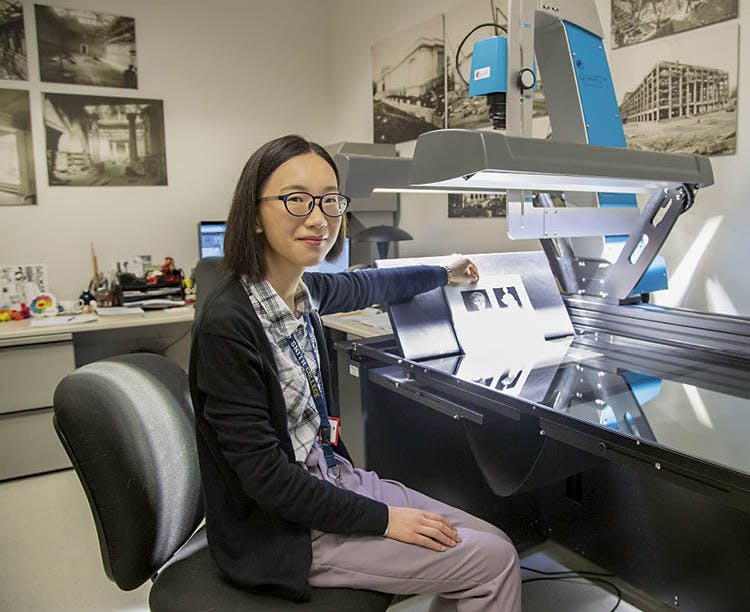- Magazine Article
- Ingalls Library and Museum Archives
Museum Publications 24/7
A digitization program opens the bookshelves to the world

Digitizer, Intern Echo Yan spent six weeks this summer working on the project.
For more than a century, a researcher wanting to consult the complete publication record of the museum needed to visit the Ingalls Library, in person. In the reference collection, a dozen shelves were dedicated to collection and exhibition catalogues, bulletins and journals, pamphlets, gallery guides, and annual reports. Everything printed by the museum ended up on the shelf, representing a century-long conversation about the collection.
Improving access to collections and resources is a key goal of the museum’s new strategic plan, Making Art Matter. Even though the library’s hours and access have since expanded, a solution has been needed for the researcher unable to visit in person. Over the past several years, the library staff has worked to digitize the public domain portions of the book collection. Out-of-copyright books printed before 1923 are made available to the public through the library’s presence on archive.org, where users can browse through and download free digital books. Since the inception of this program, the Ingalls Library’s digital collections have been accessed thousands of times, providing resources to researchers from around the world.
Since the library staff has already engaged in the digitization of the public domain titles, the team now focuses the lens of the scanner on the museum’s publication record. In more than 100 years, the museum has published over 150 exhibition and collection catalogues. Most of these books printed prior to the mid-1990s lack digital backups. For six weeks this summer, Echo (Riyao) Yan, a student at Smith College and a Summer on the Cuyahoga participant, worked with digital projects librarian Rachel McPherson in the library’s digitization lab toward producing a fully digitized museum publication record. While scanning the volumes, they recorded the page and accession number for each artwork in the collection. These notes will be useful in placing bookmarks in the digital books to indicate the location of museum objects. Once entered into the collection database, the bookmarks will point directly from the object online to the page where it is published, also online.
Tracking where artworks are published has long been a daily part of work at the museum. Inside the cover of each volume in the library’s CMA reference collection, a reader will find the accession number and page of each CMA object published within, written in pencil by diligent librarians and volunteers. In file folders in the curatorial department, photocopied articles and clippings for objects are a boon to research. But with the transition to Athena, the museum’s new object database, curators, curatorial assistants, and librarians will begin to add new and retrospective citations. Making the data available to the public through the museum’s website will ensure that the conversation about the museum’s collection continues for another 100 years.
Find digitized museum publications online at archive.org/details/clevelandmuseumofartpublications.
Cleveland Art, September/October 2018